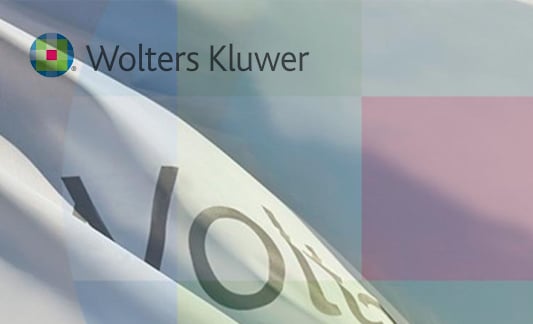Transformation Services
Not Sure Where to Start?
Transformation Services
Not Sure Where to Start?
Transformation Services
Not Sure Where to Start?

Wolters Kluwer licenses the VBUC to quickly and cost-effectively modernize its flagship accounting/fiscal software product
Using Mobilize.Net’s powerful VB to .NET migration tool to convert their 3M LOC Sistema Professionista to VB.NET, Wolters Kluwer Italia saved 2 years of work, while increasing developer productivity and ensuring continued application evolution.

Wolters Kluwer is a leading global information services and publishing company. The company provides products and services for professionals in the health, tax, accounting, corporate, financial services, legal, and regulatory sectors. Wolters Kluwer had 2008 annual revenues of €3.4 billion, employs approximately 20,000 people worldwide, and maintains operations in over 35 countries across Europe, North America, Asia Pacific, and Latin America.
In Italy, as part of the Legal, Tax & Regulatory Europe division, the company is known in the market as Wolters Kluwer Italia, which has ten of the most authoritative and accredited service producer brand names, publishing products, software and services for the professional market, companies and public administration: Artel, Cedam, Leggi d’Italia Professionale, Utet Giuridica, Indicitalia, OA Sistemi, Pragma, Mitos, OSRA and IPSOA.
IPSOA, based in Milan, Italy, offers its integrated solutions that include content, software and services, as well as traditional and electronic publishing products like books, magazine and on-offline databases, in order to help its customers to improve their productivity and efficiency, to reduce costs, and to increase their turnover.
PSOA’s Accounting/Fiscal software product, Sistema Professionista, was a suite of applications developed in Microsoft Visual Basic 6.0, and composed by the following modules:
With a total of almost 3,000,000 lines of VB6 code, the applications were structured as client-server systems, based upon a Windows interface and with a database back-end and some server components. The interface and business logic was deployed on the client machine, while the database was installed on a data server or in the same client machine, and the Suite component was a startup form used to launch all applications, and was based on IPSOA’s Framework.
Sistema Professionista was deployed on a per-customer basis, using an installer for each workstation on which the application needed to be executed. IPSOA required a more sophisticated approach to deploy the application, since it had to be delivered to thousands of clients frequently.
Also, IPSOA was looking towards ensuring continued support from Microsoft and application evolution. Hence, they were considering a migration to.NET, while maintaining the current application architecture.
Settling on VB.NET as the target language, IPSOA contacted Mobilize.Net regarding the Visual Basic Upgrade Companion (VBUC). They also got in touch with “Gruppo Reti”, an Italian IT consulting company with Microsoft .NET skills and experience with the Sistema Professionista. So Mobilize.Net provided a license for a customized version of the Visual Basic Upgrade Companion, which enabled IPSOA to minimize the amount of manual effort, duration and costs required to complete the conversion, and to implement specific code patterns in the resulting .NET application.
A customized version was in order, since IPSOA had explicit requirements that needed to be addressed. For example, COM Interoperability was to be used in the resulting .NET version of the application, to interact with the libraries and controls used in the original Visual Basic 6.0 system. The usage of COM Interop would minimize the effort and complexity of the upgrade project, though a post-migration replacement of libraries and controls with .NET equivalents after achieving Functional Equivalence was considered.
Also, several of the modules from Sistema Professionista used the Datafield property of some controls, like the TextBox control, to store important information for subsequent processes. This property was no longer available in the .NET controls and there is not an equivalent that could be used instead. So Mobilize.Net proposed a solution to this issue by generating a class that inherited from System.Windows.Forms.TextBox and had a property called DataField. The Visual Basic Upgrade Companion also converted the VB6 Textbox controls that used the DataField property to the new class, instead of the native .NET TextBox control.
IPSOA was also planning to use the Third Party control ActiveBar through .NET COM Interoperability, and the version that was used in the Visual Basic 6.0 application employed a binary file to store information of the bands. On the other hand, precise solutions for the conversion of the Recordset Source Property, While statement, Redim and Control Arrays were also automatically implemented through the use of the Visual Basic Upgrade Companion.
Applying feasibility and cost-effectiveness criteria, support was also added for other third-party controls, so that a subset of their Properties, Methods and Events (PMEs) were automatically converted to new components, as shown in the following table:
| Source component | Target |
| Sheridan DataWidgets | Infragistics Grid |
| FormulaOne | FarPoint .NET 3.0 |
| Janus Grid | Infragistics Grid |
| Tx Text Control | Tx Text Control .NET |
| ActiveBar | DataDynamics ActiveBar.NET |
| TrueDBList | Infragistics UltraGrid or ComponentOne TrueDBList |
| Sheridan ActiveTabs | Infragistics WinTab |
| Sheridan Threed | .NET native controls |
| Sheridan Active Toolbar | Infragistics WinToolBars |
| Sheridan Splitter | .NET native controls |
Finally, Sistema Professionista was an application under maintenance and development of new features, so a methodology was required to incorporate the changes into the .NET version. Mobilize.Net recommended a phased upgrade approach, which reduced even further the risk associated with the execution of the migration while the development and maintenance of the Visual Basic 6.0 codebase was also in progress. An additional advantage of this strategy was the fact that IPSOA would be able to see the results of the migration sooner, and that they would have to dedicate fewer resources to the project, and in a gradual manner.
“Mobilize.Net is a qualified company that has made of the intelligent automation one of its prerogatives of core business. By using the Visual Basic Upgrade Companion, IPSOA was able to save 2 years of work, receiving from Mobilize.Net's the support necessary to customize the tool, which allowed the evolution of the product using the features of Microsoft’s .NET Framework and the new development tools”, said Roberto Fusè, IPSOA’s lead resource for the VB6 migration project.
The migration of Sistema Professionista to Microsoft .NET will strengthen the technological advantage over competing products and, especially, it will open several possibilities for IPSOA to enhance the application. The new development environment will also increase the productivity of the developers of the application, and that is a great advantage, given the amount of requirements from current users of the application.
Based in Milan, Italy, IPSOA is part of Wolters Kluwer, a leading global information services and publishing company. They offer integrated solutions that include content, software and services, helping its customers to improve productivity and efficiency, to reduce costs, and to increase their turnover.
IPSOA’s Accounting/Fiscal software product, Sistema Professionista, was a suite of applications developed in Microsoft Visual Basic 6.0. With a total of about 3,000,000 lines of code, the client/server system was deployed on a per-customer basis, using an installer for each workstation. IPSOA required a more sophisticated deployment approach for its thousands of clients, plus ensuring continued support from Microsoft and application evolution while maintaining the current architecture.
IPSOA licensed Mobilize.Net’s Visual Basic Upgrade Companion to migrate the flagship application to VB.NET. A customized version was in order, since there were explicit requirements that needed to be addressed, like COM Interoperability to interact with the libraries and controls used in the original system, mapping of the Datafield property of some controls to a new generated class, precise solutions for the conversion of the Recordset Source Property, While statement, Redim and Control Arrays, and implementing support for additional third-party controls
By using the VBUC, IPSOA was able to save 2 years of work. And with Mobilize.Net’s recommended phased upgrade approach, it reduced even further the risk and amount of allocated resources on the migration project while the development and maintenance of the VB 6.0 code was also in progress. Overall, the migration to the .NET platform will strengthen the technological advantage over competing products and will open the possibilities for quick application enhancement, with highly increased developer productivity.
For more information about automated legacy migration software and services from Mobilize.Net, or to request information on migrating your applications, contact us and a software modernization professional will get back to you. Please send an email to info@wearegap.com

Roberto Fusè,
IPSOA’s lead resource for the VB6 migration project
8834 N Capital of Texas Hwy, Ste 302
Austin, TX 78759
Call us: +1.512.243.5754
info@wearegap.com